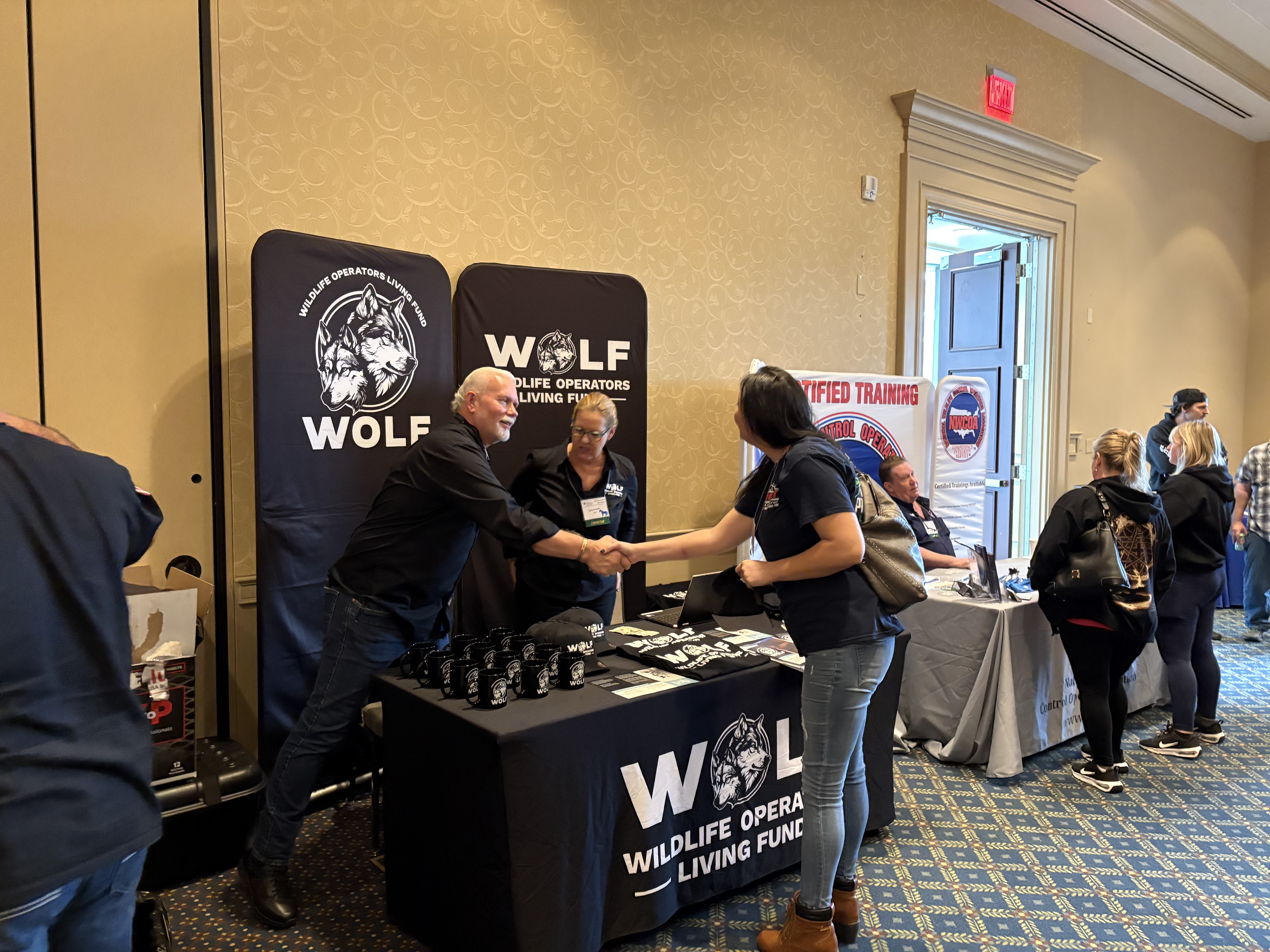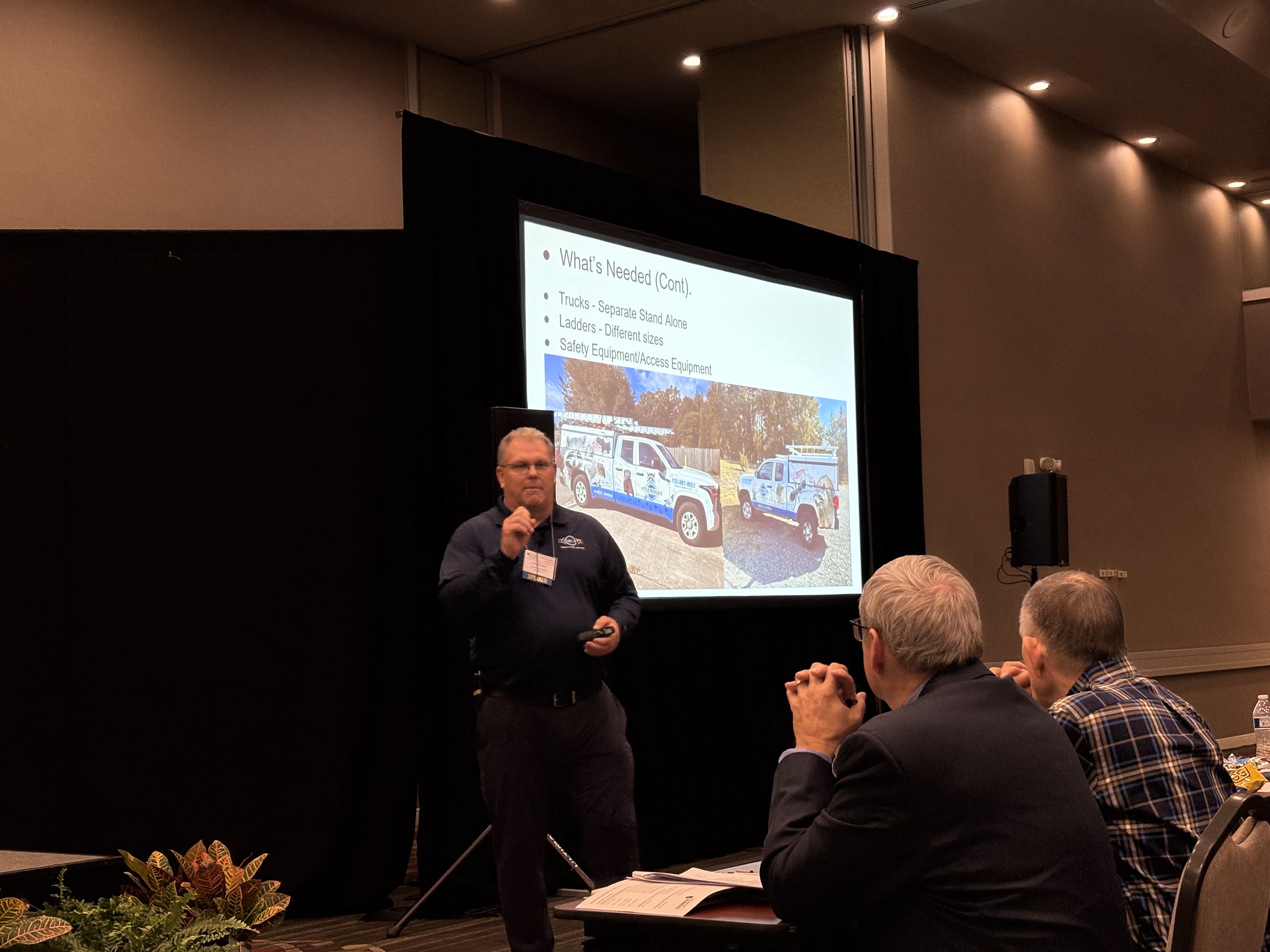
Photos by Amanda Joerndt
LEXINGTON, Ky. — The main message at this year’s University of Kentucky’s (UK) Short Course conference: Understanding biology is critical for effective pest management.
Nearly 400 pest management professionals (PMPs) and members from academia gathered to learn more about this message in Lexington, Ky., at the annual UK Short Course where they learned about the latest entomology research and technical practices, aimed to level-up PMPs knowledge in the field.
Vendors also exhibited, sharing their latest pest control products and technologies.

The conference was hosted by UK’s College of Agriculture, Food and Environment, sponsored by UK’s Department of Entomology in cooperation with KY Department of Agriculture and the Kentucky Pest Management Association (KPMA). UK assistant professor and conference chair Zach DeVries led the three-day event.
DeVries welcomed a full house of attendees Tuesday afternoon. “My job is for you to receive the best training we could put on for you with speakers and sessions here to help you be the best at your jobs,” he said.
DeVries said the planning committee’s goal is to bring pest control professionals and academia together to collaborate and share ideas on how to best solve industry problems.
“We work hard to assemble a program with a variety of topics, in a variety of ways,” he said. “Attendees will get as much out of talking with the folks in rooms and in the exhibit hall just as much as attending sessions.”
KPMA President Matt Schafer, owner of Innovative Pest Management (IPM), Lexington, Ky., reminded attendees to learn from one another and to appreciate the education passed down from generation to generation.
“As pest control professionals, we have much to be proud of in protecting public health and the environment,” he said.
Daniel Dye covered practical ant identification and management Tuesday afternoon as he shared the importance of using tools and resources, such as a magnifying glass, when in the field to properly identify ants, and why PMPs need to stay educated on pest biology for thorough inspection and treatment.
“If you want to get rid of a certain pest, you have to know about their biology, and one of the problems we have is we don’t take the time to study the pests,” he said. “Ants antenna is a good place to start for ant identification.”
Dye also said honeydew is the main source of food for ants when out foraging. “They take it back and feed it to their larvae and the process repeats,” he said. “You got to think ahead and use [products] that work, even if it’s time consuming.”
Rentokil’s Michael Thorne touched on controlling indoor small flies in residential and commercial accounts. Thorne said 60 percent of our DNA is comparable to fruit flies.
“The biology of insects is important because it leads us to proper identification of pests, which leads to long term control and setting realistic expectations for our customers,” Thorne said.
He also stressed the severity of small fly infestations for businesses: revenue loss, brand damage and potential disease transmissions from garbage and drains.
“We got to get dirty when it comes to small fly control and do the hard part,” Thorne said.
Richard Cooper, founder of R-Cooper Consulting, entomologist and bed bug expert, reviewed the reemergence of bed bugs during the past 25 years in Wednesday morning's session. Cooper reviewed four main areas of bed bugs: behavioral ecology, detection, treatment methods and client preparation.
Cooper said the classic inspection model for bed bugs once showed that 93 percent of bed bugs were found near beds and furniture, but recent studies show that 63 percent of bed bugs are now being found away from beds and furniture, and following treatment, that number increased to 83 percent.
“Bed bugs are much more mobile than previously believed to be,” he said. “Treatments should not be limited to only rooms where bed bug activity has been seen. Most PMPs rely on visual inspections, and these are fine when infestations are heavy, but we know from research that most infestations are low-level with not a lot of bed bugs present.”
From a resident’s perspective, bed bugs could decrease one’s quality of life, create social injustices, create economic hardships and significantly increase public health risks, Cooper said.
“Where are we failing in the industry?” he asked attendees. “Not using the most effective methods. We are good at reducing infestations, but not eliminating them.”
DeVries covered cockroaches by reviewing the basic biology of various species, control strategies, treatment methods and how to best communicate with customers on keeping public health and sanitation top of mind.
“[Customers] make it easy for cockroaches to enter homes and we want to make it as hard as possible, so the insecticides work as hard as possible,” he said. “They will feed on a lot of different things, but they don’t need much to survive.”

Wildlife control was a hot topic this week and is becoming a more popular service offering in the pest control industry, Drew Cowley, founder of Cowley’s Pest Services, said in a presentation on navigating wildlife in a business model.
Cowley oversees the company’s wildlife division, and said wildlife is a profitable add-on service and a one-stop-shop for most customers. “They’re all pests and at the end of the day, we’re all in pest control, so why not take care of everything?” Cowley said.
Wildlife technicians are different hires compared to general pest control technicians, he said. For example, wildlife technicians cannot have fears of heights and most being unwilling to operate on roofs.
Wednesday evening wrapped up with a gathering in the exhibit hall for further networking and collaboration.
Thursday morning, DeVries and his graduate students shared the latest entomology research happening in their labs. One of his students, Olivia Katz, studies how to reduce allergens in German cockroaches. Because of how quickly infestations can build up, they could have significant impacts on human health, she said. Mechanical removal, physically removing the allergens, vacuuming with HEPA filter bags and washing hands could help eliminate allergens. “Source reduction is time dependent, and we need to be able to remove allergens efficiently,” she said.
WANT MORE?
Enter your email to receive our newsletters.
Latest from Pest Control Technology
- Envu Introduces Botanical-Based Insecticide to Treat Mosquitoes
- Massey Services' Ed Dougherty Announces Retirement
- Cook's Pest Control Brandon Martin Uses First Responder Training to Save Customer's Life
- VPMA Board Member RJ Mitchell Publishes Children's Book
- NPMA Shares Resources for National Pest Management Month
- Fieldster Launches New Next-Generation Mobile App
- Coalmarch Announces Transition to Private Ownership
- Termatrac Introduces iTraker Pro






